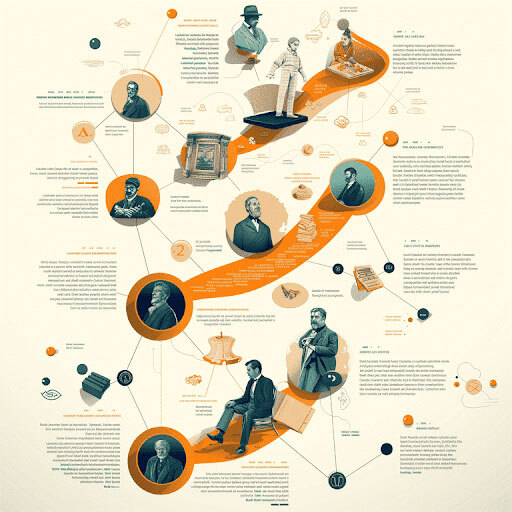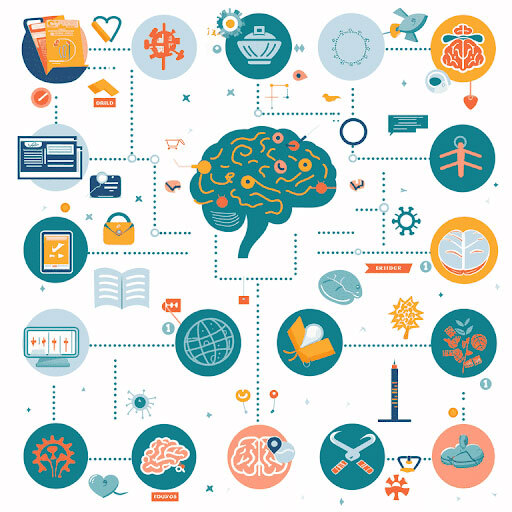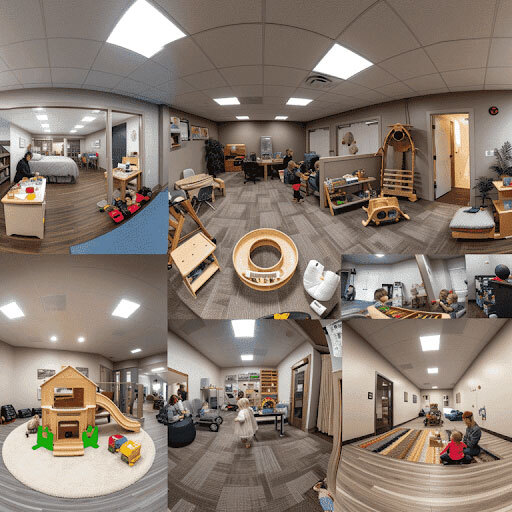Understanding What Is ABA Therapy: A Comprehensive Guide
Introduction
When you hear about ABA therapy for the first time, it sounds like another medical acronym. But ABA, short for Applied Behavior Analysis, is a life-changing approach for many families. It helps children and adults with autism and other developmental disorders.
We designed this guide to demystify ABA therapy. It explains what it is, how it works, who it can help, and why it’s considered a gold standard in treating behavioral and developmental conditions.
ABA therapy is more than a set of techniques. It’s a philosophy that believes in the power of positive reinforcement. It encourages desirable behaviors. This makes daily life smoother and more fulfilling for individuals and their families.
This guide aims to provide a comprehensive overview of ABA therapy. It’s for parents exploring therapy options for their child. It’s also for students in psychology and anyone curious about behavioral health.
Defining ABA Therapy
The Basics of Applied Behavior Analysis
At its core, ABA therapy is a scientific discipline.
Understanding and improving human behavior is the main concern. Grounded in the belief that all behaviors are learned. You can change unhealthy or undesirable behaviors. The therapy applies learning principles, like positive reinforcement. It increases beneficial or desired behaviors.
It reduces those that may cause harm or interfere with learning.
The Scientific Principles Behind ABA
The behaviorist theory roots ABA.
The theory suggests that individuals can measure, change, and control behaviors. The primary scientific principle behind ABA is the concept of operant conditioning. B.F. Skinner, a renowned psychologist, introduced it. Operant conditioning is a method of learning. It occurs through rewards and punishments for behavior.
In ABA, individuals are more likely to repeat behaviors that result in pleasant outcomes.

Historical Background of ABA Therapy
Early Development and Key Figures
One can trace the origins of ABA therapy back to the early 20th century.
Psychologists like Ivan Pavlov developed classical conditioning. Their work inspired John B. Watson and later B.F. Skinner’s operant conditioning. But, it was in the 1960s that ABA began to take shape as a therapy for children with autism and developmental disorders. Pioneers like Dr. Ivar Lovaas were instrumental in this development. Their work demonstrated the potential of using behavioral techniques.
The techniques improve social and communication skills in autistic children.
Evolution of ABA Practices Over Time
Over the decades, ABA therapy has evolved.
It has changed from focusing on intensive, clinic-based interventions. Now it also includes more naturalistic approaches and settings. This evolution reflects a broader understanding of autism. It also shows a shift towards more inclusive and individualized treatment plans. Today, ABA includes a range of strategies. Tailoring it can meet each person’s unique needs.
This makes it a versatile and practical approach to behavioral therapy.

How ABA Therapy Works
ABA therapy assesses the individual’s needs and abilities. Then, it develops a personalized treatment plan targeting specific behaviors. We track the individual’s progress and adjust the plan. The ultimate goal is to improve social, communicative, and learning skills. We will reinforce positive behaviors and reduce negative ones.
Components of ABA Therapy
Discrete Trial Training (DTT)
Structure and Implementation
DTT is a structured technique of ABA therapy. Break down skills into their simplest parts. A series of trials teaches them. Each trial consists of a prompt, the individual’s response, and a consequence. The consequence is positive reinforcement. This method allows learning in a controlled environment. It also helps build a foundation for more complex skills.
Benefits and Applications
DTT is particularly effective for teaching new behaviors or skills. It works for basic commands and more complex tasks. Its structured nature makes it easier for individuals with developmental disorders to understand and respond. It improves learning outcomes.
Natural Environment Training (NET)
Engaging in the Natural Setting
NET takes the principles of ABA therapy into everyday situations. It focuses on teaching behaviors and skills in the contexts where they naturally occur. It uses the individual’s interests and motivations to encourage learning. This method is less structured than DTT and allows for more spontaneous interactions.
Incorporating Interests and Motivations
NET helps people learn social and communication skills. It uses what they find engaging. It does so in a more relaxed and natural way. This approach helps generalize behaviors across different settings. It ensures that skills learned in therapy translate to real-world situations.
In these initial sections, we’ve covered the basics of ABA therapy. We’ve also discussed its historical background. We’ve also discussed the components that make up the therapy. This foundation sets the stage for understanding the benefits, techniques, and applications of ABA therapy. We’ll explore this practical approach to improving the lives of individuals with developmental and behavioral challenges in more detail.
Keep reading!

Benefits of ABA Therapy
ABA therapy isn’t just about changing behaviors. It’s about opening up a world of possibilities for individuals and their families. Here’s how it makes a difference:
Improvements in Communication Skills
Enhancing Verbal and Non-Verbal Communication
For many, the most heartwarming progress comes from communication breakthroughs. A child saying their first word is a step forward. Using sign language or an assistive device to communicate is also a step forward. It’s a leap toward independence and understanding.
Social Skills Development
Fostering Interactions and Relationships
Imagine the joy of watching a child start play with a peer for the first time or share a toy without prompting. ABA therapy fosters these moments. It teaches social skills in structured and natural settings. This enables meaningful connections.
Behavioral Improvements
Reducing Problem Behaviors
From tantrums to self-injury, challenging behaviors can be distressing. ABA therapy addresses these behaviors head-on. It uses positive reinforcement to encourage alternative, more adaptive behaviors.
Promoting Positive Behaviors
But it’s not just about reducing the negatives. It’s equally about amplifying the positives. Celebrating every instance of sharing, patience, or kindness reinforces these behaviors. It makes them more common.
Academic Performance
Supporting Learning and Cognitive Development
For children in school, ABA therapy can be a game-changer. Children learn to tackle homework, take part in class, and even enjoy learning. They do this by breaking down complex tasks into manageable steps.

ABA Therapy Techniques and Strategies
ABA employs various techniques and strategies to meet individual goals. Here’s a closer look:
Positive Reinforcement
Mechanisms and Examples
At the heart of ABA is positive reinforcement. It rewards desired behaviors to encourage repetition. This could be as simple as a high-five for a job well done or a token to exchange for a favorite activity.
Task Analysis
Breaking Down Complex Skills
Life is full of complex tasks. Task analysis makes them manageable by breaking them down into smaller, achievable steps. This systematic approach builds confidence and competence, one step at a time.
Generalization and Maintenance
Applying Skills in Various Contexts
Learning a skill in one setting is excellent. The real goal is transferring that skill to new environments. ABA therapists ensure that individuals can apply behaviors learned in therapy sessions at home, school, and beyond.
Ensuring Long-Term Retention
The ultimate success of ABA therapy lies in its lasting impact on an individual’s life. Once you learn a skill, you can use maintenance techniques to ensure that you retain it over time. This provides endless benefits.

ABA Therapy Settings
Where ABA therapy takes place can have a significant impact on its effectiveness. Each setting offers unique advantages:
In-Home ABA Services
Advantages of Home-Based Therapy
For many, home is where they make the most significant progress. In-home therapy allows therapists to work in a familiar environment. They can tailor strategies to real-life situations and routines.
Clinic-Based Services
Benefits of a Structured Environment
Clinics provide a structured environment that’s ideal for intensive therapy. They offer a controlled setting for practicing social interactions. It’s also a space where children can learn from peers.
School-Based ABA Programs
Integration with Educational Objectives
Integrating ABA with their educational plan can support academic success and social integration for school-aged children. This can also make the school experience more rewarding for everyone involved.
Each section of this guide builds upon the last. This creates a comprehensive picture of ABA therapy. It shows its profound impact on individuals and families. ABA therapy uses scientifically proven techniques and a personalized approach. It opens doors to new opportunities, fostering growth, learning, and happiness.

Who Can Benefit from ABA Therapy?
ABA therapy has a broad application range. It benefits individuals with various needs across their lifespan.
Children with Autism Spectrum Disorder
Tailoring ABA for Autism
Children with autism find a unique ally in ABA therapy. It helps them navigate their world better by improving communication and social skills. It also reduces behaviors that may hinder their learning and interaction. The customized treatment focuses on each child’s strengths and challenges. It makes every success a building block for future achievements.
Adults with Developmental Disabilities
Adapting ABA for Different Age Groups
It’s a common misconception that ABA therapy is only for children. Adults with developmental disabilities also see significant benefits. These include enhanced independence and better social and vocational skills. ABA strategies for adults are adapted to fit personal goals. These goals may include living independently, securing employment, or building relationships.
Broader Applications of ABA
Behavioral Issues, Learning Disabilities, and More
ABA’s principles are so universal that they apply beyond autism and developmental disabilities. Individuals with behavioral issues, learning disabilities, and ADHD can benefit from ABA-based interventions. Even those looking to improve specific life skills can enjoy ABA-based interventions.

Challenges and Criticisms of ABA Therapy
No therapy is without its challenges and criticisms, and ABA is no exception. Understanding these helps in making informed decisions.
Ethical Considerations
Ensuring Respectful and Person-Centered Practices
One of the main criticisms of ABA therapy has been its past use of aversive techniques. Today, ethical ABA practices focus on positive reinforcement and respect for the individual. They ensure effective and compassionate treatment.
Addressing Misconceptions
Clarifying the Goals and Methods of ABA
Misconceptions about ABA, such as it being too rigid or controlling, often stem from a lack of understanding. Modern ABA is flexible, tailored, and deeply respectful of individual differences. It aims not to control but to empower individuals.

Finding and Choosing an ABA Therapist
Finding the right ABA therapist is crucial for a successful therapy experience. Here’s what to consider:
Qualifications and Certifications
BCBA, BCaBA, and RBT Credentials
Ensure your ABA therapist or team is appropriately credentialed. Board Certified Behavior Analysts (BCBAs) and Registered Behavior Technicians (RBTs) have completed demanding training and certification. They have the qualifications to provide ABA therapy.
Questions to Ask Potential Therapists
Evaluating Experience, Approach, and Fit
Choosing a therapist is not just about credentials; it’s also about fit. Consider asking about their experience with similar cases. Ask about their approach to challenges and how they involve families in therapy. Their philosophy and methods must align with your expectations and values.
- Experience with specific age groups or challenges: Understanding their expertise can help you gauge how well they can meet your or your loved one’s needs.
- Approach to therapy: Every therapist has their style and approach. Some may lean more towards specific ABA techniques, while others incorporate broader strategies.
- Family involvement: Family plays a crucial role in ABA therapy. Discuss how they plan to involve you and other family members in therapy.
Finding the right ABA therapist is a journey toward a partnership. It promises to unlock potential and foster growth. As you embark on this path, remember that the right therapist has the expertise. They connect with you and your loved one on a human level, paving the way for progress and positive change.
This comprehensive look at ABA therapy provides a solid understanding foundation. It covers its methods, benefits, challenges, finding the right therapist, and navigating. ABA therapy focuses on positive reinforcement and tailored approaches. It offers hope and practical support for many. It marks a path toward improved communication. It also leads to better social interaction and quality of life.

What You Need to Take Away from this Post
The Ongoing Impact of ABA Therapy
ABA therapy is now a cornerstone in treating autism and developmental disorders.
Its impact is profound and far-reaching. It unlocks new potential and paves the way for achievements that once seemed out of reach. This transforms lives. Families often report breakthroughs that significantly improve their quality of life. These breakthroughs range from a child’s first words to mastering daily skills. These skills enhance independence.
The ongoing success stories from ABA therapy are not just anecdotal. Decades of research prove their effectiveness. It’s a testament to the dedication of countless therapists, families, and individuals. They embrace the principles of ABA. They foster growth and learning.
The Future of ABA and Continuous Improvement
As we look to the future, ABA therapy continues to evolve.
It embraces new technologies, methodologies, and insights from psychology and education. The commitment to evidence-based practices ensures that ABA will keep adapting, improving, and responding to the needs of those it serves.
- Innovation and Technology: Integrating technology in ABA therapy, from apps that support communication to virtual reality for social skills training, is expanding the tools available to therapists and clients alike.
- Broader Applications: ABA’s principles are finding new applications in organizational behavior management, sports psychology, and environmental sustainability, demonstrating its versatility and effectiveness beyond its traditional scope.
- Focus on Individuality and Respect: As the field grows, there is a stronger emphasis on person-centered approaches that honor each person’s individuality, moving away from a one-size-fits-all model to truly tailored interventions.
The future of ABA therapy is bright. Innovation drives it.
A deepening understanding of human behavior fuels it. A heartfelt commitment guides it to make a difference in people’s lives. It’s a dynamic field. It seeks to improve, adapt, and expand its reach. This ensures that individuals and families can access adequate, compassionate care.
Wrapping Up
This guide aimed to illuminate the path of ABA therapy.
It covered its foundational principles and practical steps for finding the right therapist. ABA therapy focuses on positive change. It offers hope and support to those on the autism spectrum. It also supports people with other developmental challenges. It’s a journey of small steps leading to significant changes. We celebrate each progress mark and value every individual for who they are.
As we close this chapter, remember: The journey with ABA therapy is unique to each person and family. It’s a partnership built on trust, respect, and a shared goal. We aim to achieve the best possible outcomes.
Whether you’re just starting to explore ABA therapy or looking to deepen your understanding, may this guide be a helpful companion on your journey toward growth, learning, and fulfillment.

Frequently Asked Questions
What age group benefits most from ABA therapy?
ABA therapy is versatile and can benefit individuals of all ages, from toddlers to adults. Its strategies and goals are tailored to meet each person’s unique needs and developmental level. This ensures relevance and effectiveness across the lifespan.
How long does ABA therapy typically last?
The duration of ABA therapy varies widely among individuals. It depends on factors such as age, the intensity of the therapy, specific goals, and how an individual responds to treatment. Some individuals may see significant progress within a few months. Others may continue treatment for several years to maintain and build upon gains.
Does insurance cover ABA therapy?
Many insurance plans now cover ABA therapy. This is especially true for individuals diagnosed with autism spectrum disorder. Coverage details, such as the number of hours and co-payments allowed, can vary by plan and location. It’s essential to check with your insurance provider for specific coverage information.
Can ABA therapy be done at school?
Yes, schools can put in place ABA therapy. Schools may provide services or coordinate with an external ABA provider. ABA programs based in schools can help address academic, social, and behavioral goals. Children spend a significant part of their day in this context.
What is the role of parents in ABA therapy?
Parents play a crucial role in ABA therapy. They often set goals, participate in learning sessions, and then use the strategies at home. Effective ABA therapy relies on consistency across settings. Parental involvement is key to success.
How is progress measured in ABA therapy?
Ongoing assessment and data collection measure progress. It focuses on targeted behaviors and skills. ABA therapists regularly record data during sessions. They analyze the data to determine the interventions’ effectiveness. They make necessary adjustments to the therapy plan.
Can ABA therapy be used for adults without autism?
Yes, adults without autism can apply the principles of ABA therapy to help themselves. This includes people with other developmental disabilities or behavioral issues. It also includes individuals looking to change behaviors or improve skills.
How does ABA therapy differ from other types of therapy?
ABA therapy is unique because it focuses on observable behaviors. It uses data-driven techniques to measure progress. The principles of behavior analysis form its basis. It differs from other therapies by emphasizing the environmental factors influencing behavior. It uses systematic interventions to change behavior.
What training do ABA therapists undergo?
ABA therapists typically have a background in psychology, education, or a related field. Certified therapists, such as BCBAs, undergo rigorous coursework and supervised fieldwork. They must also pass a certification exam. RBTs receive specialized training and must pass a competency assessment to become certified.
Can ABA therapy help with speech delays?
Yes, ABA therapy can effectively address communication challenges, including speech delays. ABA therapy can improve verbal and non-verbal communication abilities. It does this by breaking down communication skills into manageable steps. It uses reinforcement strategies.
Is there a difference between in-home and clinic-based ABA therapy?
The primary difference lies in the setting. In-home ABA therapy provides services in a familiar environment. This can benefit generalizing skills. Clinic-based therapy offers a structured setting. It is ideal for intensive work and social interaction with peers. Individuals can choose between both options based on their needs and goals. Both have unique benefits.
How do I know if ABA therapy suits my child or loved one?
Deciding if ABA therapy is right involves:
- Understanding the individual’s needs.
- Consulting with healthcare professionals.
- Observe how the individual responds to an initial assessment or trial period of ABA.
It’s also important to consider personal and family goals. Consider the commitment required for therapy too.
Glossary
Applied Behavior Analysis (ABA): A scientific discipline that applies techniques based on learning principles, such as positive reinforcement, to improve social, communicative, and learning skills.
Behaviorist Theory: A theory suggesting behaviors can be measured, changed, and controlled through environmental interaction.
Operant Conditioning: A method of learning that occurs through rewards and punishments for behavior, emphasizing that behaviors followed by pleasant outcomes are more likely to recur.
Discrete Trial Training (DTT): A structured ABA technique where a skill is broken down into the minimum possible steps, and each step is taught through repeated trials that consist of a prompt, the individual’s response, and a consequence.
Natural Environment Training (NET): An ABA teaching method that involves instructing individuals in their natural environment using their interests and motivations to encourage learning.
Positive Reinforcement: A key ABA strategy that involves providing a reward following a desired behavior to increase the likelihood of the behavior occurring again.
Task Analysis: An ABA technique where complex skills or behaviors are broken down into smaller, more manageable components to be taught successively.
Generalization: The process of applying skills learned in one context to different environments or situations, a critical goal in ABA therapy.
Maintenance: The ABA technique ensures that behaviors continue beyond the initial learning phase.
Board Certified Behavior Analyst (BCBA): A certification for professionals who provide ABA therapy, indicating they have met specific educational and training requirements.
Registered Behavior Technician (RBT): A paraprofessional certification in ABA therapy, indicating that the individual has received specific training under the supervision of a BCBA.
Positive Behavior Support (PBS): An approach within ABA that combines values about the rights of people with behavioral science’s understanding, focusing on a respectful and positive approach to behavior change.
Functional Behavior Assessment (FBA): An analytical process used in ABA to identify specific environmental factors that influence undesirable behaviors, forming the basis for intervention strategies.
Social Skills Training: A component of ABA therapy focused on improving interpersonal skills such as communication, interaction, and understanding social cues.
Behavior Plan: A detailed strategy developed in ABA therapy outlines interventions and techniques to increase positive and decrease negative behaviors tailored to the individual’s needs.
Verbal Behavior: An ABA approach that teaches communication based on the function of words or phrases, such as requesting, labeling, or commenting, to improve language and social interaction.
Pivotal Response Treatment (PRT): A play-based, child-initiated therapeutic intervention within ABA that targets crucial areas of a child’s development, such as motivation and responsiveness to multiple cues, to produce broad improvements in communication, behavior, and social skills.

Please Give Us a Call Today at (770) 615-8989. You Have Options:
Are you exploring ABA therapy options for your child or loved one?
We understand that navigating the world of developmental therapies can be overwhelming. It’s crucial to find a supportive, knowledgeable team. They can guide you through the process with care and expertise. We invite you to contact us at (770) 615-8989 to schedule a free consultation.
Call us to learn more about our ABA treatments in a friendly, no-pressure environment. You can come in and see for yourself. Our team is passionate about making a positive difference. Certified and experienced ABA professionals. They work to improve the lives of individuals with autism. They also help those with other developmental disorders. We’re here to answer all your questions. We tailor our programs to meet the unique needs of each person we work with, providing insight. We’ll also show you how we can help your loved one reach their full potential.
During your visit, you’ll see our facilities firsthand. You’ll learn about our approach to personalized care. You’ll also discover our wide range of ABA services. Whether you’re considering ABA therapy or looking to find the best fit for your family’s needs, this consultation is an excellent step toward making informed decisions for your loved one’s development and well-being.
Don’t wait to take the first step towards a brighter future. Call us today at (770) 615-8989 to set up your complimentary visit. Let us show you how our ABA treatments can provide the support, hope, and results you seek. We’re here to journey with you every step of the way.

Technical Sources for this Article
To ensure our readers have access to reliable and comprehensive information, the following sources were referenced to create this comprehensive guide on ABA therapy:
- Behavior Analyst Certification Board (BACB): Provides certification standards for ABA professionals. Visit BACB
- Autism Speaks: Offers resources on autism spectrum disorders, including sections on ABA therapy. Visit Autism Speaks
- Association for Behavior Analysis International (ABAI): Dedicated to the advancement of behavior analysis, offering resources for professionals and those interested in the field. Visit ABAI
- Center for Autism and Related Disorders (CARD): A leading organization in ABA therapy for autism treatment, providing insights into ABA therapy and services. Visit CARD
- The National Autistic Society: Based in the UK, offering information on autism, including educational and therapeutic approaches. Visit The National Autistic Society
- Council of Autism Service Providers (CASP): Offers guidelines for quality autism services and best practices in ABA therapy. Visit CASP
These sources are renowned for their contributions to the field of ABA therapy and autism research, providing valuable insights and information for families, individuals, and professionals seeking to understand and navigate the world of ABA therapy.